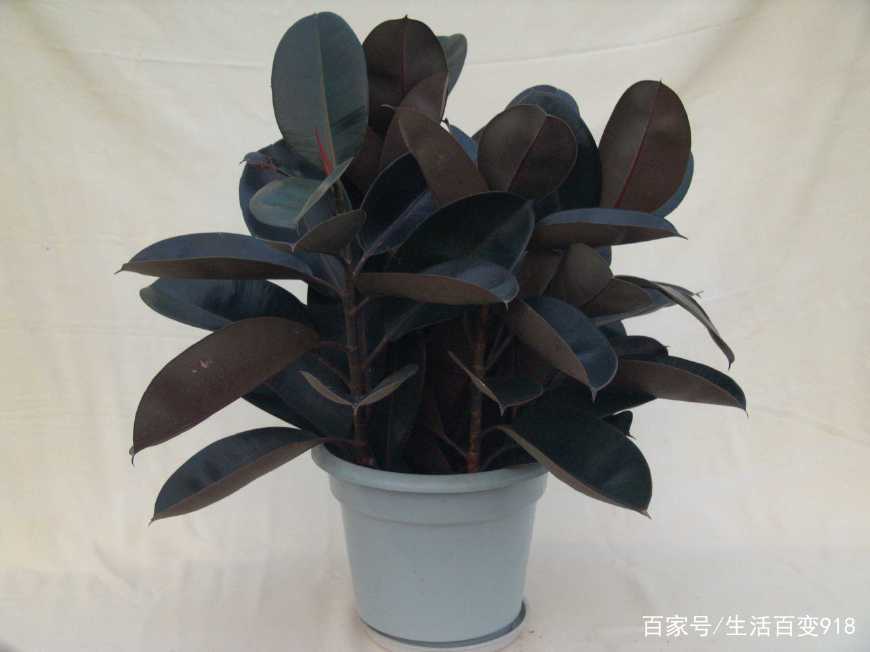The basic Culture of Black King Kong

Black King Kong, grayish red bark, greasy. Leaf blade long stipitate, alternate, thickly leathery, long ovate to ovate, 8-30 cm long and 7-9 cm wide, apex rounded, base rounded, entire, dark green, shiny, lateral veins numerous and more parallel; stipules solitary, lanceolate, covered with terminal bud, up to 1x2 of leaves, purple-red, detached into annular ruins. The female is the same plant, the fruit is born in pairs in the axils of deciduous leaves, yellowish green when ripe, ovate-long ovate; achenes oval, with verrucose protuberances.
Black King Kong is an evergreen tree of Moraceae, native to India and Malaysia, so it is nicknamed Indian rubber tree. The backbone of the rubber tree is more prominent, less branched, and has aerial roots. Simple leaves alternate, leaf blade long ovate, thick leathery, bright green, lateral veins many and parallel, young leaves red, petiole stout. Black King Kong likes water and should spend the winter indoors! Generally, water is watered about once a week, and summer should be decided according to the weather and the humidity of the basin soil.
The reason why the leaves of Black King Kong withered:
The light is too dim. The development environment of Black King Kong requires light of about 10000-20000 lux. When the light is too low, the poor ventilation will show signs of yellow leaves and fallen leaves.
It's too cold. The suitable temperature for Black King Kong development is 20-30 ℃, and the development is the most desolate at 25-30 ℃. The development is poor when it is less than 10 ℃, and it is easy to suffer frost injury when it is below 0 ℃. If you are hit by a cool breeze indoors, there will be signs of yellow leaves and fallen leaves.
It's not watered properly. Black King Kong likes water, but is not resistant to water stains. When it shows signs of drought damage, when there is no oxygen in the roots, it will show signs of yellow leaves and fallen leaves. Watering should abide by the yardstick of "see dry and wet". Don't water too often.
If the height of the plant of Black King Kong is not very high, it can be inherited and maintained under the maintenance of deformities, and the fallen leaves will be contained in the future, but when the plant is more than 1.2 meters, you can consider to arrange it outdoors or on the balcony for two weeks, when the development tends to be deformed, leave it 20-50 cm (height depends on your appreciation) to be cut off, and the truncated branches can be inserted into the river sand and placed in a cool place. With sufficient humidity, it will become a new black King Kong plant in about 2 months. After being cut off, several branches can sprout from the lower part of the stem, making the plant shape double plump and elegant.
- Prev

There are always flying insects in growing flowers. It only takes five moves to make it disappear from your house forever.
Since we have raised flowers and plants at home, small flying insects have become regular guests at home. Although the flowers are beautiful, the accompanying bugs are also very annoying. Today, the chief will give you a few tips on how to control the flying insects. 01. The reason for the emergence of small flying insects in the flowerpot 1.
- Next

Creativity | he envies him to put the garden in the car and enjoy the flowers.
Speaking of trucks, what can flower friends do? Move, pull, etc. The Japanese, who were greatly inspired by their thinking, connected the garden with the truck and created a beautiful private garden in the trunk. Today, follow Huahua to take a look at these beautiful ones.
Related
- Wuhan Hospital Iron Tree Blooming Result Was Instantly Frightened by the Gardener Master
- Which variety of camellia is the most fragrant and best? Which one do you like best?
- What is the small blue coat, the breeding methods and matters needing attention of the succulent plant
- Dormancy time and maintenance management of succulent plants during dormancy
- Minas succulent how to raise, Minas succulent plant pictures
- What are the varieties of winter succulent plants
- How to raise succulent plants in twelve rolls? let's take a look at some experience of breeding twelve rolls.
- Attention should be paid to water control for succulent plants during dormant period (winter and summer)
- Watering experience of twelve rolls of succulent plants
- Techniques for fertilizing succulent plants. An article will let you know how to fertilize succulent plants.

